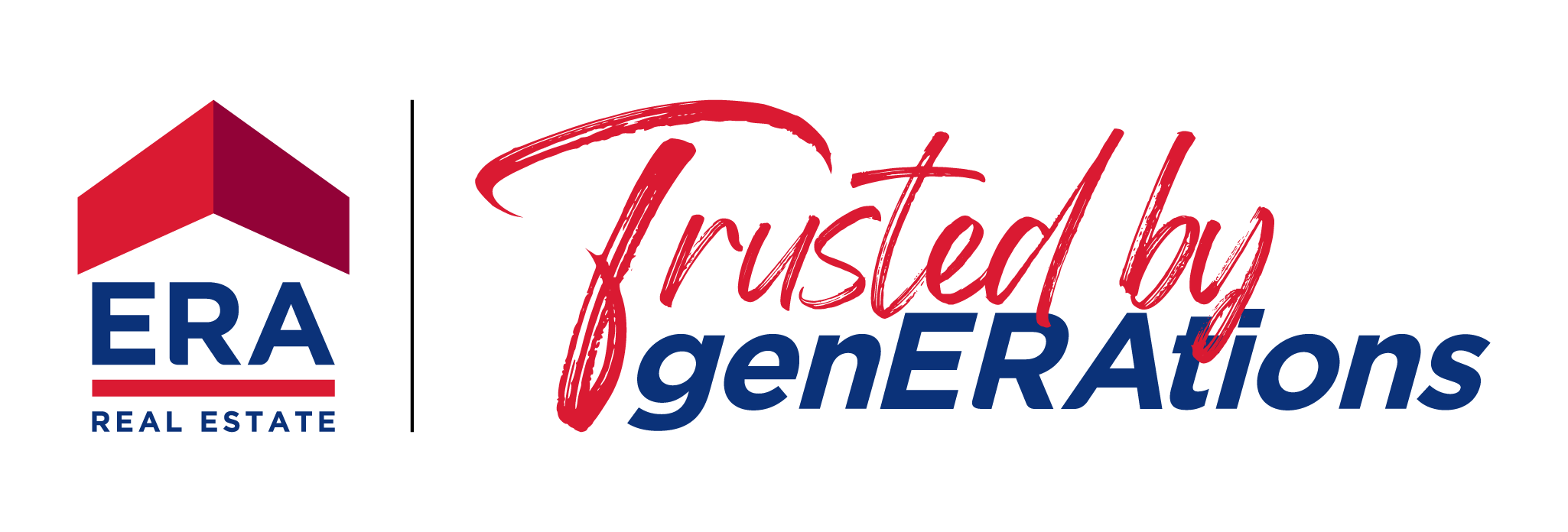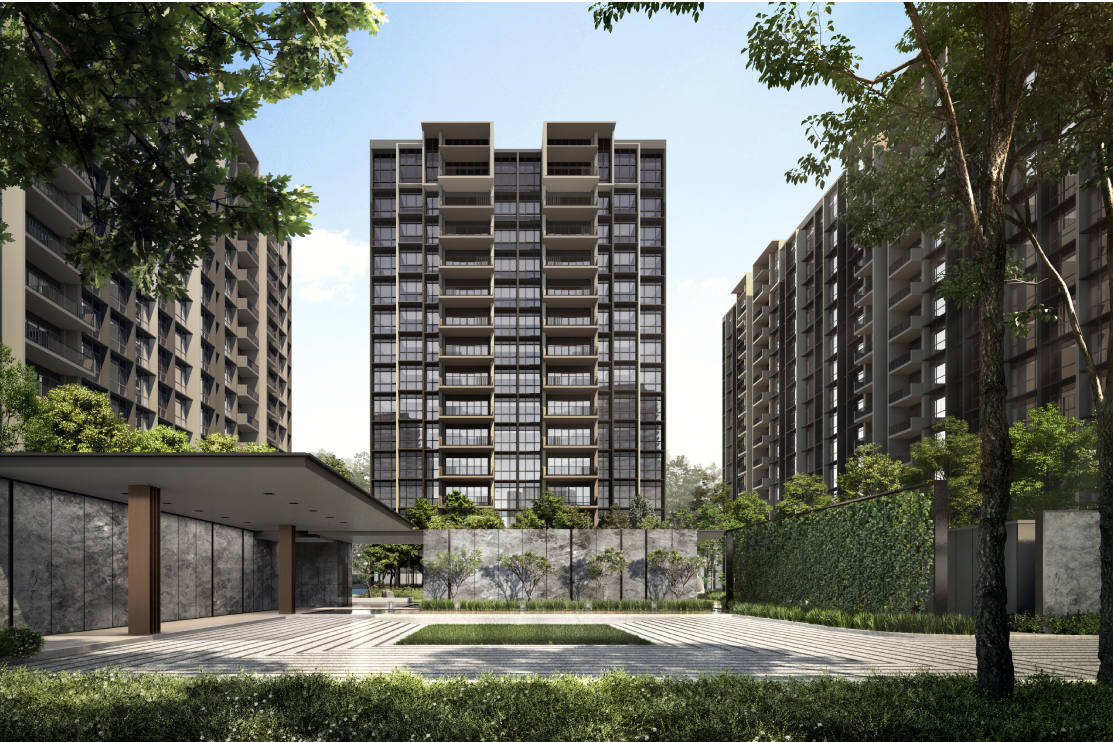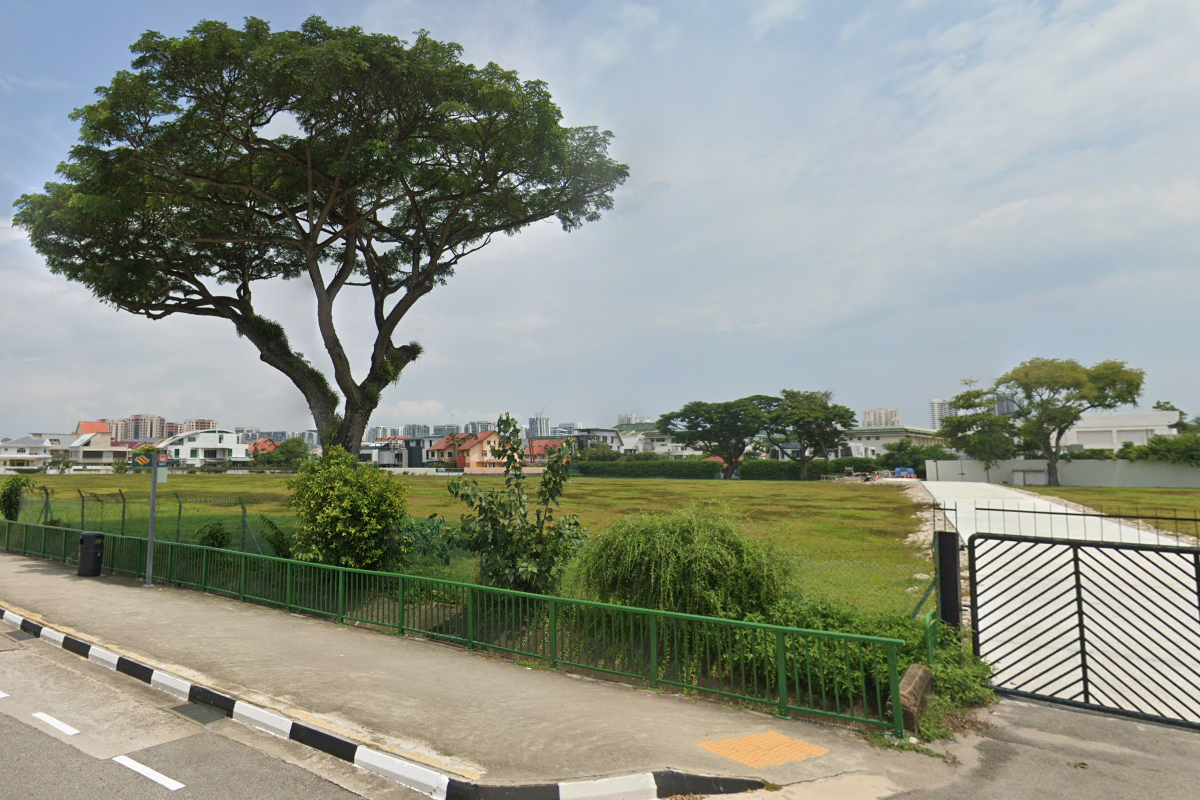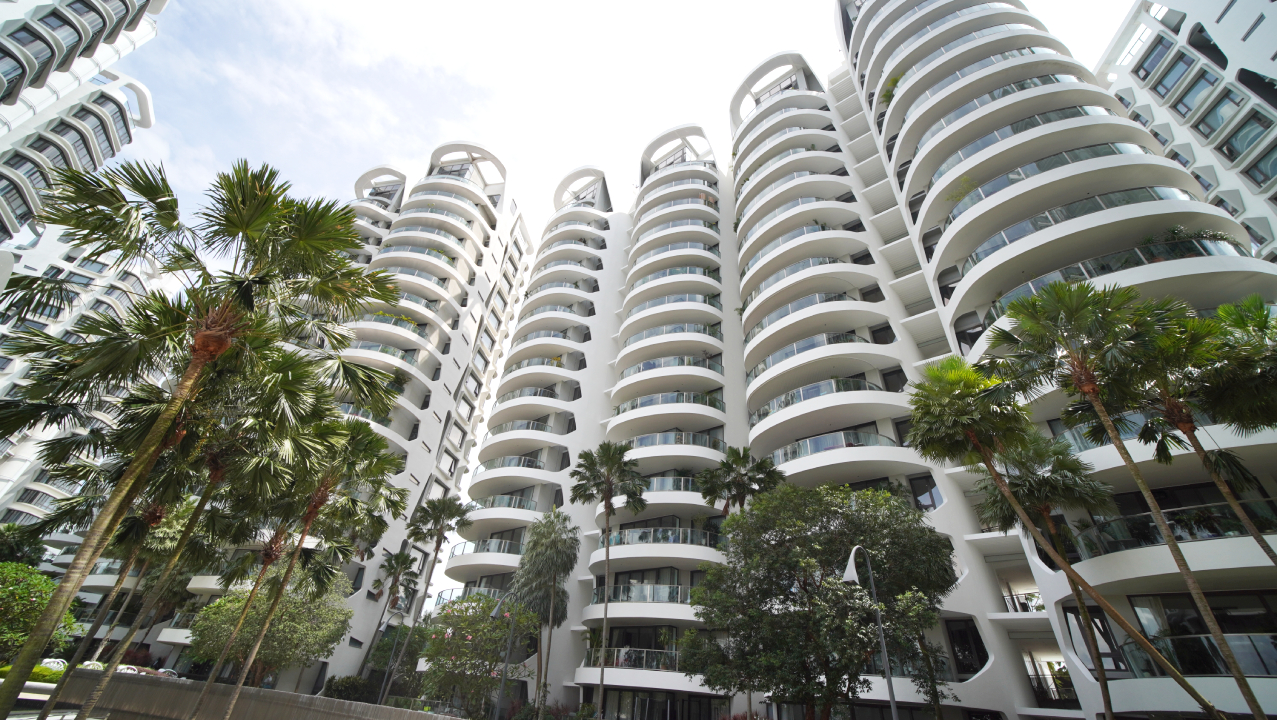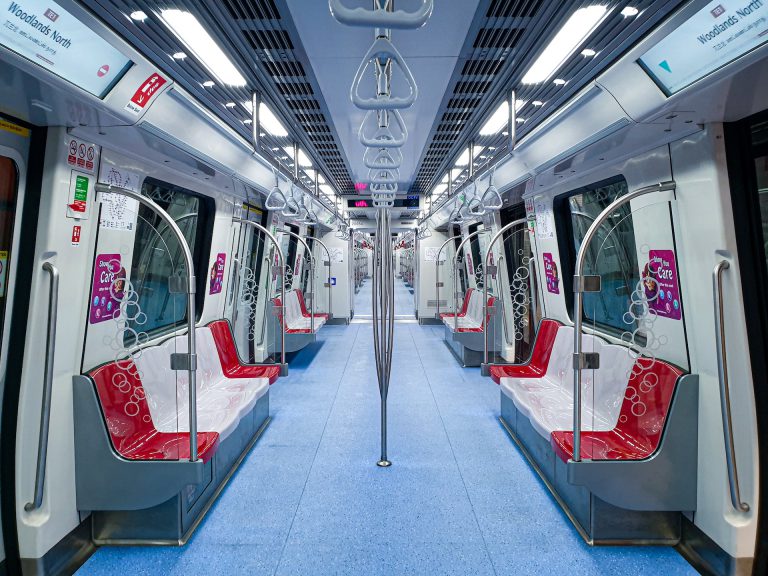Executive Condominiums (EC), Explained: What Are They? And Why Buy One?
- By Stanley Lim
- 6 mins read
- Executive Condominium
- 19 Jul 2024
Given their on-site facilities, like swimming pools and gyms, as well as the “condominium” label, it’s not hard to see why Executive Condominiums (EC) are an attractive option for homebuyers in Singapore.
Besides offering similar value propositions as regular condominiums, such as the privacy and security of a gated compound, ECs also possess a comparable sense of exclusivity. However, if you were to examine ECs in greater detail, you’ll notice several unique characteristics.
For instance, while new ECs are constructed by private developers, they are subject to similar rules and regulations as public housing (read: HDB flats). This applies to important concerns, including but not limited to, purchase eligibility, Minimum Occupation Period (MOP), and property rental.
So, where exactly do the similarities end and the differences begin for ECs? And more importantly, are they worth buying? For answers, and more, keep scrolling!
What is an Executive Condominium?
In a nutshell, ECs can be viewed as affordable alternatives to conventional non-landed private housing, albeit with key differences in buyer eligibility, as well as selling and renting restrictions.

Eastvale, Singapore’s first-ever Executive Condominium (Source: Google Maps)
For instance, ECs are subject to the same MOP as HDB flats, meaning that owners are prohibited from selling or renting out the entire unit during the holding period, which lasts five years from the date of obtaining the Temporary Occupation Permit.
Upon completion of the five-year MOP, these resale and rental restrictions are loosened, allowing EC owners to sell their home – but only to Singaporeans and Permanent Residents – as well as to rent them out entirely as a unit.
After a further five years from the end of an EC’s MOP, it’ll will achieve full privatisation, making it legally-purchasable by foreigners.
Also, in case you are wondering how ECs came to be as a ‘middle ground’ between HDB flats and private condos, their origins can be traced way back to the nineties.
In 1995, then Prime Minister Goh Chok Tong announced the introduction of a new housing concept to “satisfy the demands of those who aspire to own private property but cannot afford to do so”.
The end result is as we know it – strata-titled residences offering the best of both worlds, in terms of affordability and exclusivity.
How are Executive Condominiums different from private condos?
Besides being subject to the abovementioned regulations by HDB, there are several other notable ways that ECs differ from private condos:

However, if we were to set everything else aside, perhaps the most significant difference (for homebuyers) is the comparatively lower price tag of ECs.
Table 1a: Median psf prices for Executive Condominiums in District 23

Source: URA (as of 26 June 2024), ERA Research and Market Intelligence
Table 1b: Median psf prices for private condominiums in District 23

Source: URA (as of 26 June 2024), ERA Research and Market Intelligence
A quick glance at recent EC and new private condo launches in the same locality lends credibility to this observation.
Units at Altura and Lumina Grand, both ECs, have median prices of $1,479 and $1,525 respectively, whereas homes at their new private condo counterparts in District 23 command median prices of $1,799 and upwards.
Generally, this gap in prices between ECs and private condos can be chalked up to the substantial subsidies provided by the Singapore government, which may amount to as much as $30,000 for eligible first-time EC buyers.
Location, or more specifically, lower land costs associated with quieter sections of Singapore, likely play a contributing role in the greater affordability of ECs as well. And that is because ECs are typically built in up-and-coming areas, away from bustling mature towns where human activity, and also, land prices are higher.
What is the buying journey for a new Executive Condominium like?
Step 1: Find out about your desired EC and eligibility
For buyers in Singapore, the journey of purchasing a brand-new EC begins from the point that a developer announces the launch of a new EC project; this typically takes place 15 months after an EC site has been tendered during a Government Land Sales exercise.
But aside from visiting an EC showroom, buyers will also want to find out if they are eligible to purchase an EC at this stage.
This can be done by checking against the EC applicant eligibility conditions listed on the official HDB website, but generally, these criteria include:

Step 2: Submitting an application to the EC’s developer and waiting for balloting outcome
After completing the initial homework, the next step for buyers would be to apply for a developer’s balloting exercise; this process can be completed online via an e-application or in-person.
At this stage, buyers will also likely be required to provide copies of their identity, income, and marriage documents. So, keep them handy!
Step 3: Unit booking and receiving an Option to Purchase
Following the ballot, successful buyers will be informed and they can schedule an appointment to book their desired unit.
Once done, buyers will then have to pay an Option Fee amounting to 5% of the EC unit’s purchase price – do take note that this amount has to be paid in cash. In exchange, buyers will receive an Option to Purchase (OTP) from the EC’s developer, which is a legal document that grants a buyer the choice to purchase a property within a set option period.
In addition, buyers who wish to utilise their CPF Housing Grant and/or CPF savings will need to apply to the CPF Board at this stage too. Doing so will allow them to use said CPF monies for their downpayment as well.

Lumina Grand, an Executive Condo (EC) in Bukit Batok.
Step 4: Hire a solicitor and finalise housing loan arrangements
By this point, buyers will want to engage a solicitor (a.k.a. a lawyer) to handle the conveyancing process, which will involve lodging a caveat. Doing so ensures that no other interested buyers will be able to purchase their chosen property during the caveat’s validity (i.e., this is the legal equivalent of declaring: “I chope this unit.”).
This is also the stage where buyers should finalise their housing loan arrangements. As ECs cannot be financed using an HDB loan, buyers will have to search for a suitable mortgage package from a bank.
Step 5: Sign the Sales & Purchase Agreement and make stamp duty payments
The Sales & Purchase Agreement is a binding legal contract that documents the intentions and terms of a home purchase, and it will be provided by the EC’s developer when HDB approves a successful application.
Upon receiving a Sales & Purchase Agreement, the next steps for buyers would be to sign it and exercise the OTP. This step will require buyers to pay for the following:
- Booking Fee (5% of the EC’s price)
- Downpayment (15% of the EC’s price)
- Stamp duties (payable where relevant, e.g., Buyer’s Stamp Duty)
Once done, all that is left is waiting for the keys to a brand-new EC home!
How much can you borrow for an Executive Condominium purchase?
If you are taking up a mortgage to pay for an EC purchase, the maximum amount that you can borrow is determined by the Loan-to-Value (LTV) limit.

North Gaia, an Executive Condo (EC) in Yishun.
Presently, the maximum LTV borrowing limit for an EC purchase is 75% for first-timer buyers who do not have an outstanding housing loan. This is also provided that the loan tenure is limited to 25 years, and does not extend beyond the age of 65 for the borrower.
Additionally, EC buyers who are taking up a bank loan are also subject to Mortgage Servicing Ratio (MSR) and the Total Debt Servicing Ratio (TDSR). These thresholds respectively determine how much of a borrower’s gross monthly income can be used to pay off a property loan (MSR of 30%) and all debt obligations (TSDR of 55%).

Source: ERA Research and Market Intelligence
So, for instance, a family with a total household income of $16,000 and no outstanding loans will…
- Have a monthly housing loan eligibility of $16,000 x 30% = $4,800 based on the current MSR limit.
- Be able to allocate up to $16,000 x 55% = $8,800 for all loan repayments based on the current TDSR limit.
- Be able to borrow up to $1,005,000 for an EC on a 30-year bank loan, based on the maximum applicable LTV of 75% and a stress test rate of 4%.
How can you pay for an Executive Condominium?
Broadly, there are two ways that EC buyers can pay for their new home purchase: 1) the Progressive Payment Scheme (PPS) and the 2) Deferred Payment Scheme (DPS).
The PPS, also sometimes referred to as the Normal Payment Scheme, is a progress-based system where instalments are paid only when certain construction milestones are reached. For instance, when an EC attains its Temporary Occupation Period (TOP), a buyer will be required to make a payment amounting to 30% of a property’s value.
As for the DPS, it essentially allows buyers to push back the bulk of their repayments (usually 80% of the property’s value) until their EC achieves its TOP.
Table 2: Difference in payment between PPS and DPS for a $1.5m EC, assuming 75% of the loan is paid

Source: ERA Research and Market Intelligence
While this approach typically results in the total repayment being 2 to 3% higher than the PPS, the DPS could prove valuable for buyers who wish to shore up their cash savings.
The same applies for parties with an existing home loan as the DPS will enable them to service one mortgage at a time, instead of juggling two.
What housing grants are available for Executive Condominiums?
Although EC purchases aren’t eligible for CPF/HDB Housing Loans, it’s still possible for buyers to qualify for the CPF Housing Grant – provided they satisfy the eligibility conditions.
There are two types of CPF Housing Grants available for EC buyers, the Family Grant and Half-Housing Grant.
The Family Grant is applicable to Singapore Citizen (SC) households as well as joint SC and Permanent Resident households, whereas the Half-Housing Grant is applicable for couples consisting of a first-timer (who hasn’t taken any housing subsidies) and a second-timer.
The average gross monthly household income (HHI) stipulated for different tiers of the Family Grant and Half-Housing Grant are summarised as follows:
Table 3a: Family Grant tiers based on average gross monthly HHI

Source: HDB (as of 3 July 2024), ERA Research and Market Intelligence
Table 3b: Half-Housing Grant tiers based on average gross monthly HHI

Source: HDB (as of 3 July 2024), ERA Research and Market Intelligence
So, should you buy an Executive Condominium? What are your options?

Between their attractive price points, comprehensive facilities, and eventual privatisation, ECs have plenty going for them! So, if you are a buyer who is in the market for a new home, these affordably-priced properties should most definitely be on your radar.
At present, there are not one, but three EC developments that buyers can take their pick from. These include:

Source: ERApro (as of 19 July 2024), ERA Research and Market Intelligence
Keen on owning a home at ECs like Altura, Lumina Grand, or North Gaia? Feel free to approach an ERA Trusted Adviser and take your first step towards owning an EC in Singapore!
Disclaimer
This information is provided solely on a goodwill basis and does not relieve parties of their responsibility to verify the information from the relevant sources and/or seek appropriate advice from relevant professionals such as valuers, financial advisers, bankers and lawyers. For avoidance of doubt, ERA Realty Network and its salesperson accepts no responsibility for the accuracy, reliability and/or completeness of the information provided. Copyright in this publication is owned by ERA and this publication may not be reproduced or transmitted in any form or by any means, in whole or in part, without prior written approval.
